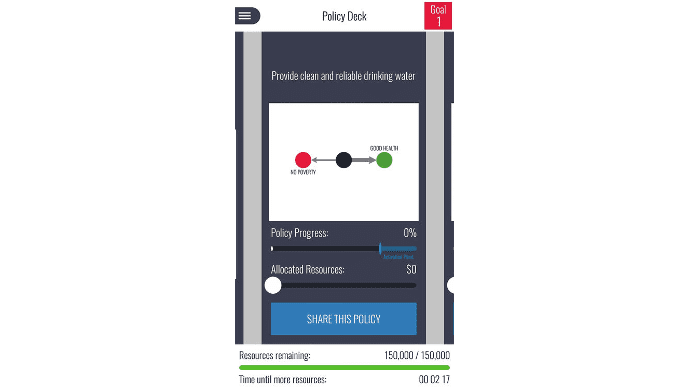Earlier this month, I set off for Bonn to help launch '2030 Hive Mind', a Sustainable Development Goals (SDGs) game at the ODI’s first annual Global Festival of Ideas – the world's first playable conference on sustainable development.
The idea was to bring influential people, policy-makers, development wonks (like me), and activists together to get a sense of the knock on effects – both positive and negative – that focusing on one SDG can have on other. We aimed to find ways to collaborate and coordinate through the pushes and pulls of many different actors, objectives and motivations.
How to play
You’re a government minister in a low-income country. Your goal: to reach your department’s SDG by 2030. You start out with a set of policy options, and can buy or borrow more from others.
You must stick within your yearly budget. The twist, of course, is that there is never enough money. And even with the right resources, your plans won’t work without collective political will.
Sounds unfair? These are the kinds of difficult choices made by policymakers on a daily basis. Although tasking and complex, the good news is the game is winnable, and winning strategies could be pathways to meeting the SDGs.
Why a game?
Fun as it is, there is a very serious point to our game. The SDGs are so complex and interdependent that we urgently need fresh thinking and new approaches to deliver them in time.
The game gives 'players' a safe space to try out different strategies and helps them see that we can’t get to where we need to be without working together. It allows us to experiment and find, through trial and error, coherent, coordinated ways to manage the inevitable trade-offs and compromises we’ll need on our march towards 2030.
Læs resten af blogindlægget på Overseas Development Institutes websted















